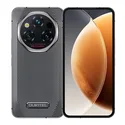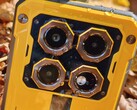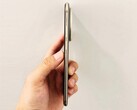Verdict on the Oukitel WP60
With the Oukitel WP60, you will definitely stand out. Whether it's the massive metal chassis in cyberpunk or Transformers style or the night vision camera, which allows you to take pictures even in complete darkness.
Although the large 10,000 mAh battery delivers what it promises and far exceeds the runtimes of other outdoor phones, the battery life of just under 24 hours is not quite as impressive compared to top phones with a significantly smaller battery.
You get a stable phone that has its heating under control, but you shouldn't expect too much power from the SoC. The screen is quite bright, which is good for sunny days.
The cameras take decent pictures, but you shouldn't have too high expectations here either.
All in all, a decent outdoor phone with eye-catching qualities.
Pros
Cons
Price and availability
Directly from the manufacturer you can get the phone for around US$ 330.
Table of Contents
- Verdict on the Oukitel WP60
- Specifications
- Case and features - Transformer look in metal
- Communication and operation - Reliable fingerprint sensor
- Software and sustainability - Unknown update duration
- Cameras - night vision included
- Display - Huge, but with low resolution
- Performance, emissions and battery life - little power for a long time
- Notebookcheck overall rating
- Possible alternatives in comparison
Specifications
Case and features - Transformer look in metal
The manufacturer has come up with a few design ideas for the Oukitel WP60: Although it also has the visible screws found on many other outdoor smartphones, the back is made of metal and has subtle stripes that refract the light. The camera bezels look like screw nuts and the buttons on the side also have an octagonal design.
Especially in the yellow color variant, the phone is reminiscent of the Autobot Bumblebee from Transformers or the look of the game Cyberpunk 2077. The black and silver color variants are somewhat more subtle.
At 360 grams, the phone is no lightweight, but at 7.2 inches it also offers a huge screen. It is protected against dust and water in accordance with IP68/69K and can therefore also be taken on shallow dives in fresh water.
NFC for mobile payments is on board. If you give up one of the two SIM slots, you can also insert a microSD card. The reader works at a medium speed.
| SD Card Reader - average JPG Copy Test (av. of 3 runs) | |
| Oukitel WP60 (Angelbird V60) | |
| Samsung Galaxy XCover 7 Pro (Angelbird V60) | |
| Average of class Smartphone (5.72 - 58.9, n=69, last 2 years) | |
Cross Platform Disk Test (CPDT)
Communication and operation - Reliable fingerprint sensor
The Oukitel WP60 cannot use the 6 GHz network for Wi-Fi connections. With Wi-Fi 5 you get standard speeds between 250 and 360 Mbps. These are achieved quite stably.
There are many mobile phone bands available, so you can often use the phone for mobile Internet even when traveling. The reception is only average, perhaps the robust metal housing has a negative effect here.
The large buttons can be felt accurately and the touchscreen can be operated precisely. There is also a fingerprint sensor on the right in the standby button. However, this is difficult for left-handers to reach with their index finger due to the size of the phone. It recognizes a fingerprint very quickly and reliably.
| Networking | |
| Oukitel WP60 | |
| iperf3 transmit AXE11000 | |
| iperf3 receive AXE11000 | |
| Samsung Galaxy XCover 7 Pro | |
| iperf3 transmit AXE11000 6GHz | |
| iperf3 receive AXE11000 6GHz | |
| Oukitel WP210 | |
| iperf3 transmit AXE11000 | |
| iperf3 receive AXE11000 | |
| Motorola ThinkPhone 25 | |
| iperf3 transmit AXE11000 6GHz | |
| iperf3 receive AXE11000 6GHz | |
| Average 802.11 a/b/g/n/ac | |
| iperf3 transmit AXE11000 | |
| iperf3 receive AXE11000 | |
| Average of class Smartphone | |
| iperf3 transmit AXE11000 | |
| iperf3 receive AXE11000 | |
| iperf3 transmit AXE11000 6GHz | |
| iperf3 receive AXE11000 6GHz | |
Software and sustainability - Unknown update duration
Android 15 is pre-installed and is only minimally modified by the manufacturer. The security updates are from October 2025 at the time of testing and are therefore very up-to-date.
However, there is no information on how updates will continue.
There is also no information on sustainability. Oukitel does not use plastic for the packaging either.
Cameras - night vision included
The 108-megapixel main camera takes decent photos, which can also be enlarged a little. A macro camera provides some flexibility, but it has a very low resolution and is therefore only suitable for snapshots.
The real highlight, however, is the night vision camera with up to 8 megapixels. It uses an infrared diode on the back to take black and white photos in decent quality at a distance of up to 10 meters, even in complete darkness. This is particularly useful for observing animals or as a night vision device via the screen.
There is a 32-megapixel selfie camera at the front, which takes reasonably detailed pictures. However, the dynamics and color selection are only moderately accurate.
Image comparison
Choose a scene and navigate within the first image. One click changes the position on touchscreens. One click on the zoomed-in image opens the original in a new window. The first image shows the scaled photograph of the test device.
Hauptkamera PflanzeHauptkamera UmgebungHauptkamera Low Light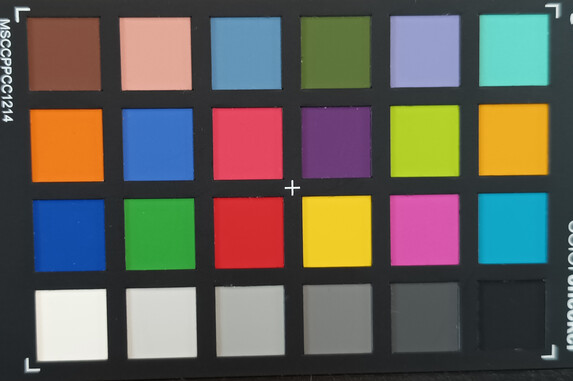

Display - Huge, but with low resolution
Outside of flip phones, we have rarely had a cell phone screen this large in the test lab: The Oukitel WP60 offers a 7.2-inch display and therefore a very large screen area.
However, the resolution is very low at 1,560 x 720 pixels, resulting in a somewhat coarse image impression.
The maximum brightness of around 700 cd/m² is good and is also sufficient on bright days.
We also did not notice any PWM flickering.
| |||||||||||||||||||||||||
Brightness Distribution: 89 %
Center on Battery: 695 cd/m²
Contrast: 1738:1 (Black: 0.4 cd/m²)
ΔE ColorChecker Calman: 5.25 | ∀{0.5-29.43 Ø4.78}
ΔE Greyscale Calman: 4.7 | ∀{0.09-98 Ø5}
88.7% sRGB (Calman 2D)
Gamma: 2.173
CCT: 7556 K
| Oukitel WP60 IPS, 1560x720, 7.2" | Samsung Galaxy XCover 7 Pro PLS, 2408x1080, 6.6" | Oukitel WP210 OLED, 2412x1080, 6.7" | Motorola ThinkPhone 25 p-OLED, 2670x1220, 6.4" | |
|---|---|---|---|---|
| Screen | -27% | -33% | 53% | |
| Brightness middle (cd/m²) | 695 | 495 -29% | 532 -23% | 1125 62% |
| Brightness (cd/m²) | 657 | 466 -29% | 523 -20% | 1109 69% |
| Brightness Distribution (%) | 89 | 86 -3% | 96 8% | 97 9% |
| Black Level * (cd/m²) | 0.4 | 0.58 -45% | ||
| Contrast (:1) | 1738 | 853 -51% | ||
| Colorchecker dE 2000 * | 5.25 | 5.85 -11% | 8.39 -60% | 1.95 63% |
| Colorchecker dE 2000 max. * | 10.05 | 9.78 3% | 17.38 -73% | 3.37 66% |
| Greyscale dE 2000 * | 4.7 | 7 -49% | 6 -28% | 2.4 49% |
| Gamma | 2.173 101% | 2.231 99% | 2.106 104% | 2.099 105% |
| CCT | 7556 86% | 8691 75% | 8111 80% | 6336 103% |
* ... smaller is better
Screen Flickering / PWM (Pulse-Width Modulation)
| Screen flickering / PWM not detected | |||
In comparison: 53 % of all tested devices do not use PWM to dim the display. If PWM was detected, an average of 8111 (minimum: 5 - maximum: 343500) Hz was measured. | |||
Display Response Times
| ↔ Response Time Black to White | ||
|---|---|---|
| 33.7 ms ... rise ↗ and fall ↘ combined | ↗ 18.7 ms rise | |
| ↘ 15 ms fall | ||
| The screen shows slow response rates in our tests and will be unsatisfactory for gamers. In comparison, all tested devices range from 0.1 (minimum) to 240 (maximum) ms. » 90 % of all devices are better. This means that the measured response time is worse than the average of all tested devices (20.2 ms). | ||
| ↔ Response Time 50% Grey to 80% Grey | ||
| 28.1 ms ... rise ↗ and fall ↘ combined | ↗ 13 ms rise | |
| ↘ 15.1 ms fall | ||
| The screen shows relatively slow response rates in our tests and may be too slow for gamers. In comparison, all tested devices range from 0.165 (minimum) to 636 (maximum) ms. » 37 % of all devices are better. This means that the measured response time is better than the average of all tested devices (31.6 ms). | ||
Performance, emissions and battery life - little power for a long time
The MediaTek Dimensity 7025 SoC is not the best choice because it is not incredibly fast. It usually manages to avoid stutters in everyday use, but waiting times occur during more demanding activities.
Many modern graphics standards are also not supported, which means that some games do not run at all or only in greatly reduced quality. On the other hand, the casing hardly heats up at all.
The small speaker on the bottom edge does a decent job and can get relatively loud at over 87 dB(A). The most important Bluetooth audio codecs are also available for wireless audio transmission.
The huge 10,000 mAh battery makes the Oukitel WP60 the ideal companion for trips away from the power grid: In our practical WLAN test, it enabled runtimes of almost 24 hours. This means you can even bridge several days without a power outlet.
The battery can be charged with up to 33 watts, resulting in maximum charging times of just under 3 hours.
| Geekbench AI | |
| Single Precision NPU 1.5 | |
| Average of class Smartphone (80 - 5210, n=57, last 2 years) | |
| Oukitel WP60 | |
| Average MediaTek Dimensity 7025 (n=1) | |
| Half Precision NPU 1.5 | |
| Average of class Smartphone (80 - 36297, n=57, last 2 years) | |
| Oukitel WP60 | |
| Average MediaTek Dimensity 7025 (n=1) | |
| Quantized NPU 1.5 | |
| Average of class Smartphone (133 - 49889, n=57, last 2 years) | |
| Oukitel WP60 | |
| Average MediaTek Dimensity 7025 (n=1) | |
| Jetstream 2 - 2.0 Total Score | |
| Average of class Smartphone (23.8 - 387, n=152, last 2 years) | |
| Oukitel WP60 | |
| Average MediaTek Dimensity 7025 (108.8 - 111.2, n=3) | |
| Motorola ThinkPhone 25 | |
| Oukitel WP60 | Samsung Galaxy XCover 7 Pro | Oukitel WP210 | Motorola ThinkPhone 25 | Average 512 GB UFS 2.2 Flash | Average of class Smartphone | |
|---|---|---|---|---|---|---|
| AndroBench 3-5 | -40% | 44% | 13% | 5% | 73% | |
| Sequential Read 256KB (MB/s) | 1024 | 1043.4 2% | 1009.7 -1% | 975.43 -5% | 1026 ? 0% | 2213 ? 116% |
| Sequential Write 256KB (MB/s) | 906.5 | 232.6 -74% | 966 7% | 856.48 -6% | 930 ? 3% | 1831 ? 102% |
| Random Read 4KB (MB/s) | 222.4 | 194.4 -13% | 363 63% | 287.4 29% | 234 ? 5% | 294 ? 32% |
| Random Write 4KB (MB/s) | 234.3 | 63.5 -73% | 483.4 106% | 308.11 32% | 261 ? 11% | 333 ? 42% |
(±) The maximum temperature on the upper side is 41.1 °C / 106 F, compared to the average of 35.2 °C / 95 F, ranging from 21.9 to 247 °C for the class Smartphone.
(+) The bottom heats up to a maximum of 39.4 °C / 103 F, compared to the average of 34 °C / 93 F
(+) In idle usage, the average temperature for the upper side is 25 °C / 77 F, compared to the device average of 32.9 °C / 91 F.
Oukitel WP60 audio analysis
(+) | speakers can play relatively loud (87.3 dB)
Bass 100 - 315 Hz
(-) | nearly no bass - on average 22.7% lower than median
(±) | linearity of bass is average (12.1% delta to prev. frequency)
Mids 400 - 2000 Hz
(±) | higher mids - on average 6.5% higher than median
(+) | mids are linear (6% delta to prev. frequency)
Highs 2 - 16 kHz
(±) | higher highs - on average 5.5% higher than median
(+) | highs are linear (6% delta to prev. frequency)
Overall 100 - 16.000 Hz
(±) | linearity of overall sound is average (20.1% difference to median)
Compared to same class
» 32% of all tested devices in this class were better, 9% similar, 59% worse
» The best had a delta of 11%, average was 35%, worst was 134%
Compared to all devices tested
» 51% of all tested devices were better, 8% similar, 41% worse
» The best had a delta of 4%, average was 24%, worst was 134%
Motorola ThinkPhone 25 audio analysis
(+) | speakers can play relatively loud (86.6 dB)
Bass 100 - 315 Hz
(-) | nearly no bass - on average 23.8% lower than median
(±) | linearity of bass is average (10.3% delta to prev. frequency)
Mids 400 - 2000 Hz
(±) | reduced mids - on average 5.7% lower than median
(+) | mids are linear (5.6% delta to prev. frequency)
Highs 2 - 16 kHz
(+) | balanced highs - only 4.1% away from median
(+) | highs are linear (4.1% delta to prev. frequency)
Overall 100 - 16.000 Hz
(±) | linearity of overall sound is average (16.6% difference to median)
Compared to same class
» 8% of all tested devices in this class were better, 5% similar, 87% worse
» The best had a delta of 11%, average was 35%, worst was 134%
Compared to all devices tested
» 28% of all tested devices were better, 6% similar, 66% worse
» The best had a delta of 4%, average was 24%, worst was 134%
| Oukitel WP60 10000 mAh | Samsung Galaxy XCover 7 Pro 4350 mAh | Oukitel WP210 8800 mAh | Motorola ThinkPhone 25 4310 mAh | |
|---|---|---|---|---|
| Battery runtime | -38% | -22% | -40% | |
| WiFi v1.3 (h) | 23.9 | 14.8 -38% | 18.7 -22% | 14.3 -40% |
| H.264 (h) | 16.1 | 26.7 | ||
| Reader / Idle (h) | 28.5 | |||
| Load (h) | 3.4 |
Notebookcheck overall rating
The Oukitel WP60 is an outdoor phone with a very long battery life, eye-catching casing and night vision camera.
However, you have to make compromises when it comes to performance.
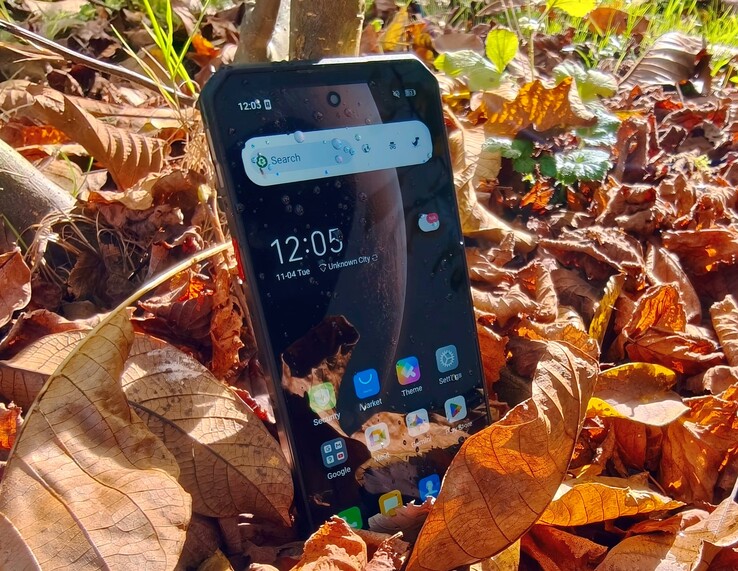
Oukitel WP60
- 11/05/2025 v8
Florian Schmitt
Possible alternatives in comparison
Image | Model / Review | Price | Weight | Drive | Display |
|---|---|---|---|---|---|
| Oukitel WP60 MediaTek Dimensity 7025 ⎘ IMG BXM-8-256 ⎘ 16 GB Memory, 512 GB UFS 2.1 | Amazon: 1. $7.88 Damolong Screen Protector Co... 2. $8.92 YQINHHME for Oukitel WP60 5G... 3. $9.99 Shantime [2 Pack Tempered Gl... List Price: 699€ | 360 g | 512 GB UFS 2.2 Flash | 7.20" 1560x720 239 PPI IPS | |
| Samsung Galaxy XCover 7 Pro Qualcomm Snapdragon 7s Gen 3 ⎘ Qualcomm Adreno 810 ⎘ 6 GB Memory, 128 GB UFS 2.1 | Amazon: $576.99 List Price: 609€ | 240 g | 128 GB UFS 2.1 Flash | 6.60" 2408x1080 400 PPI PLS | |
| Oukitel WP210 MediaTek Dimensity 8200 ⎘ ARM Mali-G610 MP6 ⎘ 12 GB Memory, 512 GB | Amazon: $399.99 List Price: 600€ | 311 g | 512 GB UFS 3.0 Flash | 6.70" 2412x1080 394 PPI OLED | |
| Motorola ThinkPhone 25 MediaTek Dimensity 7300 ⎘ ARM Mali-G615 MP2 ⎘ 8 GB Memory, 256 GB | Amazon: 1. $6.95 Mr.Shield Screen Protector c... 2. $9.90 Zeking [2+2 Pack for Motorol... 3. $21.95 BoxWave Charger Compatible w... List Price: 499€ | 171 g | 256 GB UFS 3.1 Flash | 6.36" 2670x1220 462 PPI p-OLED |
Transparency
The selection of devices to be reviewed is made by our editorial team. The test sample was provided to the author as a loan by the manufacturer or retailer for the purpose of this review. The lender had no influence on this review, nor did the manufacturer receive a copy of this review before publication. There was no obligation to publish this review. As an independent media company, Notebookcheck is not subjected to the authority of manufacturers, retailers or publishers.
This is how Notebookcheck is testing
Every year, Notebookcheck independently reviews hundreds of laptops and smartphones using standardized procedures to ensure that all results are comparable. We have continuously developed our test methods for around 20 years and set industry standards in the process. In our test labs, high-quality measuring equipment is utilized by experienced technicians and editors. These tests involve a multi-stage validation process. Our complex rating system is based on hundreds of well-founded measurements and benchmarks, which maintains objectivity. Further information on our test methods can be found here.




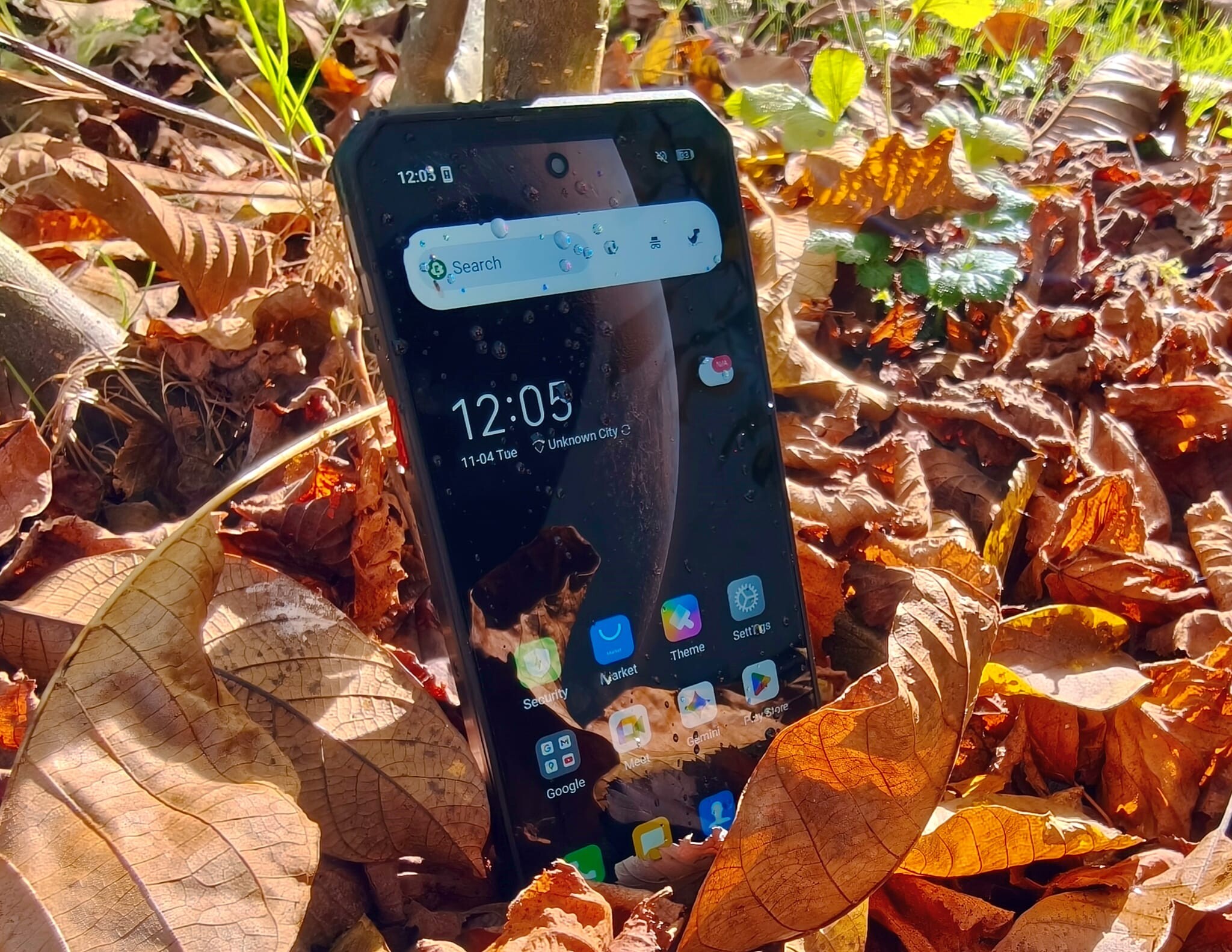

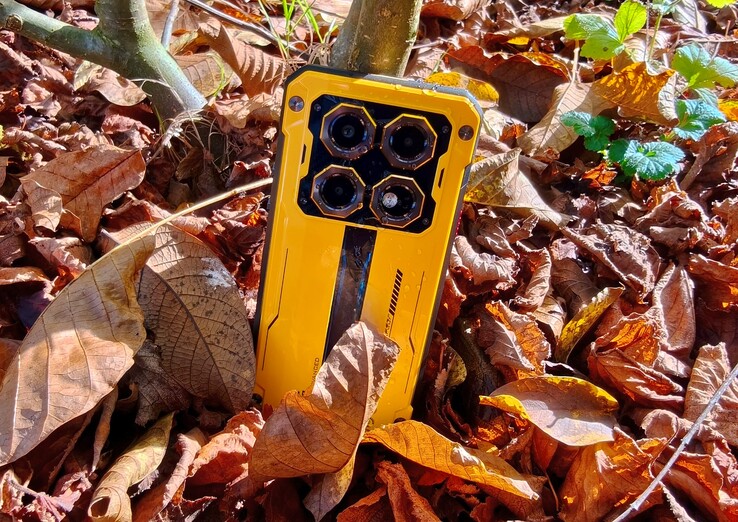




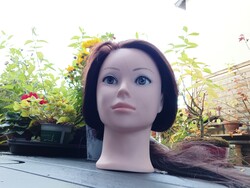

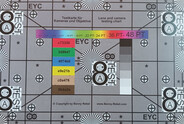



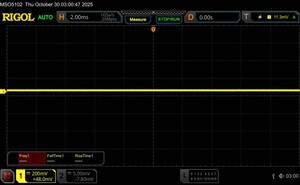


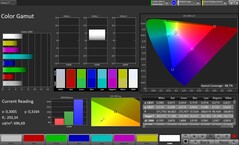

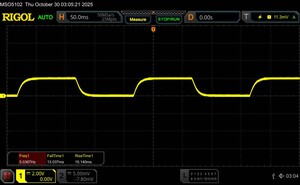
 Total Sustainability Score:
Total Sustainability Score: 

